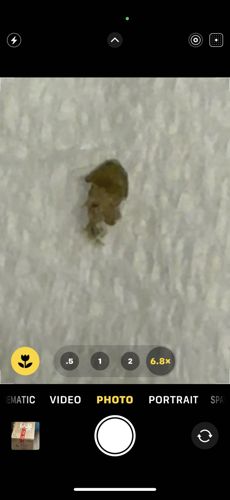Case-bearing Clothes Moth Larva
Scientific Name: Tinea pellionella
Order & Family: Lepidoptera (moths and butterflies), Tineidae (fungus moths and clothes moths)
Size: Larvae are typically 1/8 to 1/2 inch (3-13 mm) long. The case itself is usually slightly larger than the larva.

Natural Habitat
Indoors, particularly in dark, undisturbed areas such as closets, attics, storage chests, and underneath furniture. They feed on natural fibers.
Diet & Feeding
Keratin-containing materials, primarily natural fibers like wool, fur, silk, feathers, and sometimes hair. They will also feed on lint, dust, and synthetic blends if combined with natural fibers.
Behavior Patterns
The larva constructs a portable silken case incorporating fibers from its food source, which it carries everywhere. It feeds from within this case, extending its head and legs to munch on fibers. They are typically slow-moving and prefer dark, secluded environments.
Risks & Benefits
Potential risks: Significant pests of stored natural fiber items, causing damage to clothing, carpets, upholstery, and museum collections. No direct benefits to humans; in nature, they contribute to the decomposition of animal remains and shed fur/feathers.
Identified on: 10/18/2025